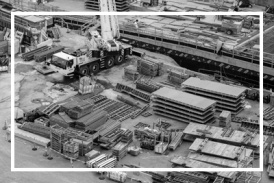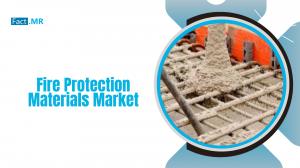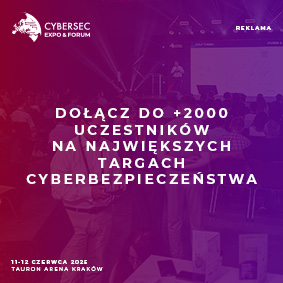Fire Protection Materials Market to Reach USD 10.3 Billion by 2035, Growing at 9.3% CAGR
Analysis of Fire Protection Materials Market Covering 30+ Countries Including Analysis of U.S., Canada, U.K., Germany, France, Nordics, GCC countries, Japan,
MD, UNITED STATES, May 14, 2025 /EINPresswire.com/ -- The global fire protection materials market is valued at USD 4.2 billion in 2025. As per Fact.MR analysis, the industry will grow at a CAGR of 9.3% and reach USD 10.3 billion by 2035. The high growth is fueled by tighter fire safety codes, rapid urbanization, and extensive use of high-rise and critical infrastructure projects. Fire-resistant sealants, mortars, sprays, and boards are becoming increasingly popular as governments and private contractors focus on occupant safety, building longevity, and regulatory requirements.The demand for efficient fire protection systems is particularly high in the wake of climate change-induced calamities, like wildfires and heat waves, which are increasing the fire threat to urban and rural settlements. With governments strengthening disaster management policies, meeting fireproofing standards is now a necessity. Also, fast-developing world cities that are growing upwards are increasingly focusing on long-term fireproofing systems, particularly those that help with occupant egress time and minimize structural loss.
For More Insights into the Market, Request a Sample of this Report:https://www.factmr.com/connectus/sample?flag=S&rep_id=10746
An analyst at Fact.MR opines, “With increasing consciousness, strict regulations, and a drive towards sustainable construction, the world fire protection materials market is experiencing a paradigm shift. Passive fire protection systems are becoming an integral part of contemporary architecture and industrial design. Companies investing in R&D, compliance integration, and eco-certification will be the winners in this new paradigm. The future is to strike a balance between performance, cost, and environmental impact to provide safe, durable buildings all over the world.”
Growth Drivers Driving Market Growth
Urbanization, infrastructure construction, and fire protection legislation are collectively fueling the development of fire protection materials. Passive and active fire prevention systems are in growing demand for commercial property, logistics centers, data parks, and smart cities. Intumescent coatings, halogen-free products, and multi-functional fire retardants are being revolutionized in material specifications. Insurers and governments are also promoting the use of certified fire protection systems by offering risk-based premiums and tax rebates.
Regional Insights
China is leading growth at 6.8% CAGR, fueled by urban development and strong safety enforcement. The U.S. follows with 5.9% CAGR, benefiting from public infrastructure investment and stricter codes. The U.K. is rapidly adopting fire-rated materials amid post-Grenfell regulations. Germany and France are expanding due to industrial automation and green building goals. South Korea and Japan are incorporating fire safety into smart and vertical construction.
Latin America and the Middle East are closing the gap with regulatory development and growing budgets for construction. Brazil and Saudi Arabia are a couple of examples of countries which are modernizing building codes, generating higher demand for fire-resistance-rated sealants and fire-resistant panels. African markets, though in the early stages, are showing growth associated with public housing and transportation infrastructure.
Segmental Insights
Sealants is likely to hold the largest share of 27.5% in 2025. Sealants are used to block gaps and joints in buildings. Fire-resistant mortars will hold a 21.3% share. Mortars are used in power plants and industrial sites. Commercial construction will lead with a 43.2% market share. Offices hospitals and malls require certified fire safety systems. Industrial construction will account for 30.5 percent of the market. This includes factories data centers and energy plants. Retrofitting of old buildings is also increasing. Green building certifications are encouraging the use of safe fire protection materials in new projects.
Survey Insights: Priorities of Stakeholders
Transitioning to data-intensive building management is another salient trend. Connection of fire security systems to intelligent sensors and prediction analytics is empowering real-time surveillance, timely identification, and greater emergency response capabilities. This transformation is turning fire safety into a dynamic component of building intelligence, rather than a static compliance obligation. Innovative companies that span hardware, software, and compliance services will have a competitive advantage in the decade ahead.
Fact.MR's poll identified 82% of stakeholders referencing occupant safety and fire code compliance as prime considerations. Regional discrepancy is the keyword—North American companies are implementing smart coatings; European companies are emphasizing nanotech insulation and bio-based retardants. Asia-Pacific prioritizes modular fire systems for quicker deployment. Global optimism is offset by supply chain difficulties and certification logjams, particularly in Europe and emerging markets. More than 80% of companies intend to invest in intelligent insulation, green coatings, and expandable protection panels.
Get Customization on this Report for Specific Research Solutions-https://www.factmr.com/connectus/sample?flag=S&rep_id=10746
Companies Redefining the Industry
Market leader 3M enjoys an 18–22% market share with an extensive portfolio of UL-approved firestop collars, sealants, wraps, and pillows. Akzo Nobel and PPG Industries offer commercial and offshore high-performance intumescent and cementitious coatings. Hilti incorporates passive fire barriers into its structural and anchoring systems. Sika and BASF use their building chemical know-how to deliver fire-resistance adhesives, claddings, and panels. Tremco, Isolatek, and Morgan Advanced Materials dominate specialty niches such as spray-applied resistive materials and acoustic composites.
Key Companies Profiled-
3M
Akzo Nobel N.V.
BASF SE
Hilti Group
PPG Industries, Inc.
Hempel A/S
Sika AG
Isolatek International
Tremco Incorporated
Morgan Advanced Materials
Explore More Related Studies Published by Fact.MR Research:
The coating pigments market is valued at USD 28.8 billion in 2025. As per Fact.MR analysis, it will grow at a CAGR of 5.5% and reach USD 49.3 billion by 2035.
The polymer binders market is valued at USD 52.3 billion in 2025. As per Fact.MR analysis, it will grow at a CAGR of 9.0% and reach USD 124.3 billion by 2035.
About Fact.MR:
We are a trusted research partner of 80% of fortune 1000 companies across the globe. We are consistently growing in the field of market research with more than 1000 reports published every year. The dedicated team of 400-plus analysts and consultants is committed to achieving the utmost level of our client’s satisfaction.
Contact:
11140 Rockville Pike
Suite 400
Rockville, MD 20852
United States
Tel: +1 (628) 251-1583
Sales Team: sales@factmr.com
Follow Us: LinkedIn | Twitter | Blog
S. N. Jha
Fact.MR
+1 628-251-1583
email us here
Legal Disclaimer:
EIN Presswire provides this news content "as is" without warranty of any kind. We do not accept any responsibility or liability for the accuracy, content, images, videos, licenses, completeness, legality, or reliability of the information contained in this article. If you have any complaints or copyright issues related to this article, kindly contact the author above.
Monument Recovery Celebrates Two Years of Growth & Life-Changing Impact
New York State Department of Veterans’ Services to Host 2025 Human Rights Conference at Fordham Law School on June 25
Faucet Hooks: New Kitchen & Bath Category Creates Usable Space Above the Sink
Kalendarium
Więcej ważnych informacji
 Jedynka Newserii
Jedynka Newserii

 Jedynka Newserii
Jedynka Newserii

Transport

Import materiałów budowlanych z Rosji zagrożeniem dla konkurencyjności europejskiego rynku. Konieczne są zmiany i egzekwowanie sankcji
Unia Europejska powinna zrewidować politykę celną na import materiałów budowlanych spoza państw członkowskich, w tym państw wschodnich – twierdzą uczestnicy konferencji „Bezpieczeństwo gospodarcze UE”. Obecnie Wspólnota nakłada na europejskich producentów coraz więcej ograniczeń, nie rewidując polityki celnej, co przekłada się na systematyczne osłabienie konkurencyjności przedsiębiorstw, spadek produkcji i zagrożenie dla miejsc pracy.
Konsument
Polacy odczuwają brak wiedzy na temat inwestowania. Może to sprzyjać podejmowaniu nieracjonalnych decyzji finansowych

Co trzeci Polak odczuwa brak wiedzy w obszarze inwestowania, a tylko co piąty chciałby pogłębić swoją wiedzę na ten temat – wynika z badania „Poziom wiedzy finansowej Polaków 2025”. Ci, którzy na własną rękę szukają informacji i porad, coraz częściej sięgają do blogów, portali, podcastów i wideo w internecie. Eksperci przestrzegają, że finansowych i inwestycyjnych porad udzielają nie tylko specjaliści w danej dziedzinie, więc potrzebna jest zasada ograniczonego zaufania.
Handel
Do 2030 roku liczba plastikowych opakowań w e-handlu modowym może się podwoić. Ich udział najszybciej rośnie w Polsce

Wraz ze wzrostem kanału e-commerce w branży modowej rośnie liczba wykorzystywanych opakowań, z których znaczną część wciąż stanowią te z plastiku. Do 2030 roku w Polsce e-sprzedawcy zużyją 147 mln plastikowych opakowań – wynika z badania przeprowadzonego na zlecenie DS Smith. Można zauważyć rosnący trend wśród marek modowych, które coraz częściej wybierają opakowania wykonane z papieru lub materiałów z recyklingu. To o tyle istotne, że polscy konsumenci odczuwają wyrzuty sumienia z powodu ilości plastiku, w którym dostarczane są ich zamówienia.
Partner serwisu
Szkolenia

Akademia Newserii
Akademia Newserii to projekt, w ramach którego najlepsi polscy dziennikarze biznesowi, giełdowi oraz lifestylowi, a także szkoleniowcy z wieloletnim doświadczeniem dzielą się swoją wiedzą nt. pracy z mediami.









.gif)

 |
| |
| |
|